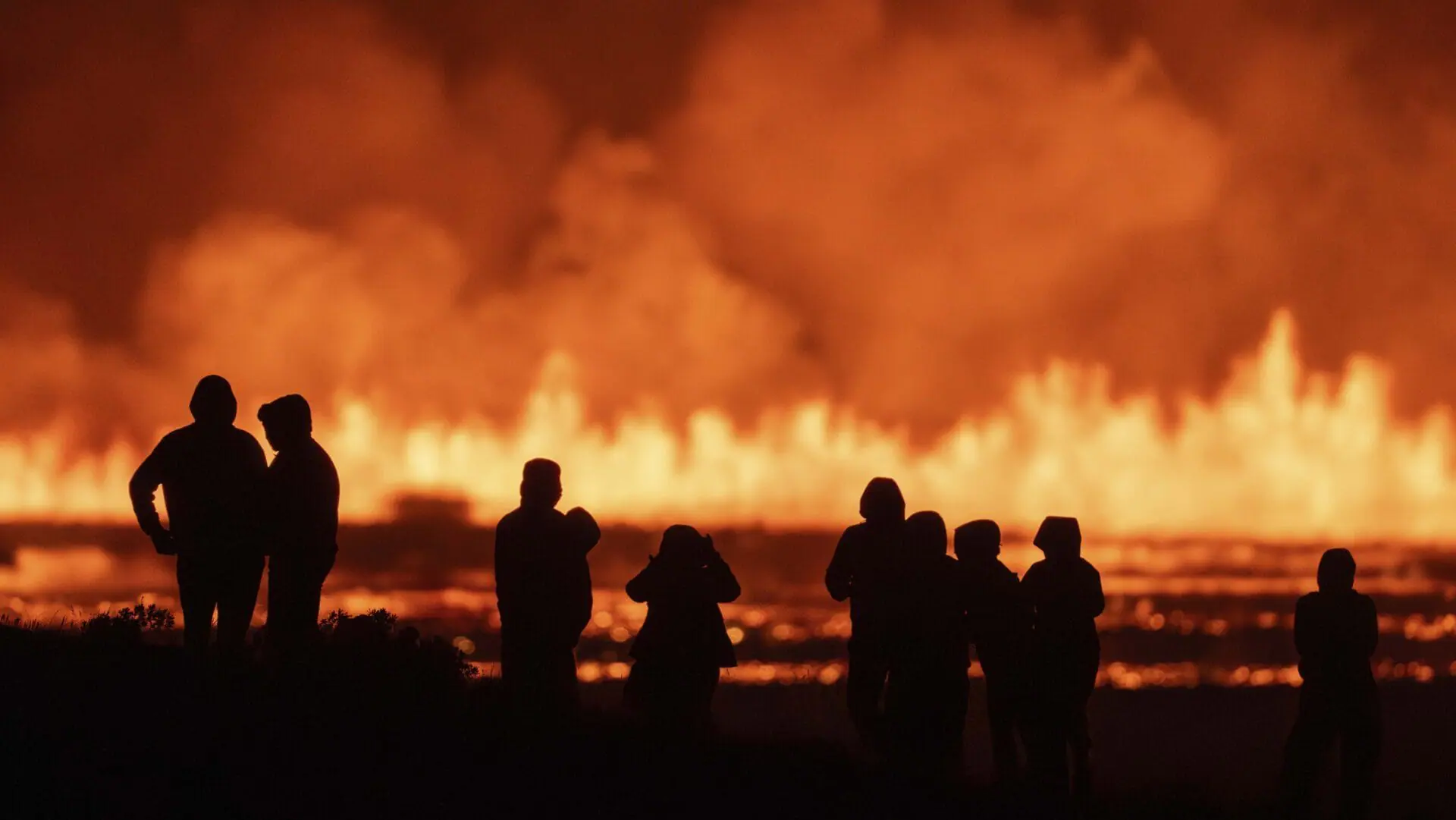An Iceland volcano erupts again but spares the nearby town of Grindavik for now
GRINDAVIK, Iceland (AP) — Lava continued to spew from a volcano in southwestern Iceland on Friday — the sixth time since December the volcano has erupted on the Reykjanes Peninsula.
The eruption from a new fissure began shortly after 9 p.m. Thursday following a series of strong earthquakes and within the hour a 4-kilometer (2.4-mile) fissure cut through the Sundhnúkur crater.
Iceland authorities say the eruption’s effects remain localized with road closures but do not threaten the population.
Halldór Björnsson, head of weather and climate at the Norwegian Meteorological Agency, told the Icelandic news portal Vísir that unlike previous eruptions, the lava flow was not heading for the town of Grindavik that was largely evacuated in December when the volcano came to life after being dormant for 800 years.
“If this continues like this, Grindavík is not in danger,” geophysicist Magnús Tuma Guðmundsson told the website after flying over the eruption. “Of course, we don’t know what will happen in the near future, but it is likely that this has reached its peak and then it will start to subside like the other eruptions.”
As news of the eruption spread, hundreds of curious onlookers drove to nearby vantage points for a view of the stunning natural phenomenon that has become a key tourism attraction.
“We just thought that it was the northern lights,” said Mahnoor Ali, visiting from Maryland in the U.S. “It’s like the coolest thing I’ve seen in my whole life, honestly.”
Friends Ameerul Awalludin from Malaysia and Shohei Miyamito from Japan were with an Icelandic friend when they heard the news and quickly rushed to the region of the eruption.
“We have like a volcano as well,” said Miyamito, but “we cannot see lava like this.”
But for people living and working on the Reykjanes Peninsula, the regular eruptions and ensuing evacuation orders cause more frustration than excitement.
The repeated volcanic eruptions close to Grindavík, a town of 3,800 people about 50 kilometers (30 miles) southwest of the capital, Reykjavik, have damaged infrastructure and property and forced many residents to relocate to guarantee their safety.
The few who had returned were forced out once again Thursday night as strong winds blew plumes of toxic gas over the town.
The nearby Blue Lagoon geothermal spa — one of Iceland’s biggest tourist attractions — was also evacuated with social media videos showing sirens blasting around dusk.
The spa was closed Friday but staff was preparing to reopen it, Helga Árnadóttir, manager of sales, operations and services, told national broadcaster RUV.
Iceland, which sits above a volcanic hot spot in the North Atlantic, averages one eruption every four to five years. The most disruptive in recent times was the 2010 eruption of the Eyjafjallajokull volcano, which spewed clouds of ash into the atmosphere and disrupted trans-Atlantic air travel for months.
The latest eruption is not expected to impact air travel.
___
Keyton reported from Berlin.
